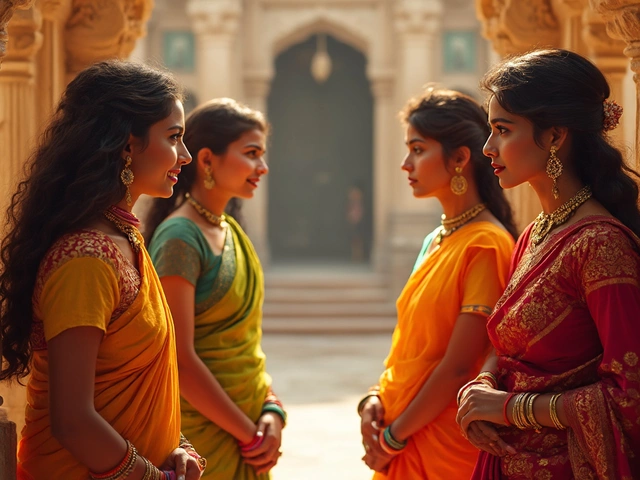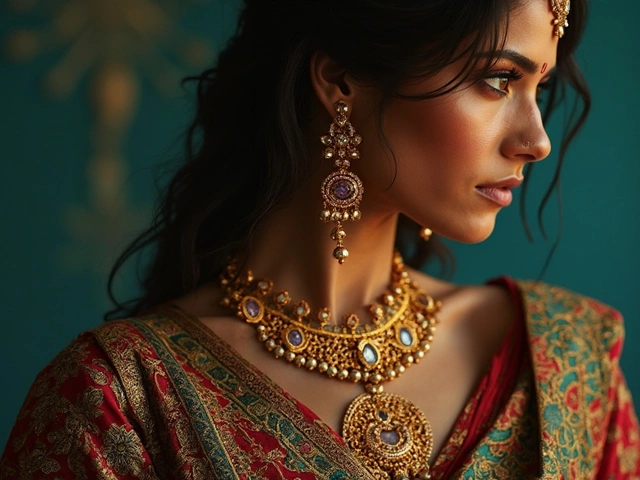
The kada is more than just a piece of jewelry; it's a symbol of faith and strength in Punjabi and Sikh traditions. You might have noticed it as a simple steel or iron bangle gracing the wrists of many. But can someone outside this culture wear it? Well, that's the million-dollar question.
Let's unravel the kada's story first. It's one of the Five Ks, which Sikhs hold dear as part of their religious identity. But don't worry, wearing one doesn't mean you're stepping on religious toes. Many Sikhs see it as a personal reminder of their beliefs, like a compass pointing to moral integrity and universal equality.
Why is this important to non-Punjabis? Because cultural sensitivity goes both ways. You wouldn't want to wander into the realm of cultural appropriation accidentally, right? Think of this as a little guidebook on how not to be 'that' person. It’s all about respect and understanding, and knowing why some might take it too personally can be a first step to bridging those gaps.
- Understanding the Kada
- Cultural Significance for Punjabis
- Non-Punjabis and Kada Wearing
- Respectful Practices
Understanding the Kada
At first glance, a kada might look like a simple bangle, but it holds a detailed story and depth of meaning. It's predominantly associated with Sikhism but also has roots in Punjabi culture at large. Traditionally, the kada is either made from iron or stainless steel and it symbolizes unity, strength, and integrity.
The kada is not just a fashion accessory, but one of the Five Ks—a set of five articles of faith that Sikhs committedly wear. Each article serves as a reminder of their faith and principles. Wearing a kada signifies a commitment to living a life filled with ethics and responsibility.
“The kada is a symbol of unbreakable attachment and oneness with God, a way to keep the wearer focused on righteousness and morality.” — Harjinder Singh, Sikh Historian
For those outside of these traditions, understanding the kada's significance can prevent awkward missteps into what might be deemed cultural insensitivity. But, there's room for curiosity. Wearing a kada has for some become a gesture of respect and appreciation. However, always remember the value of your intent when you choose to wear it, whether it’s for its symbolic strength or as a nod to cultural unity.
Material and Design Features
Traditionally, kadas are unadorned, but in contemporary times, you might find them engraved with religious maxims or other decorations. This simple, circular band is a reminder that life is a complete circle and that there's no beginning or end, aligning with the concept of eternity inherent in Sikhism.
- Material: Usually made of iron or steel to symbolize strength.
- Shape: A plain circular band, suggesting an unending cycle.
Understanding these key elements helps demystify the kada’s symbolism. Recognizing its importance can encourage meaningful conversations around cultural practices, creating opportunities for appreciation rather than appropriation.
Cultural Significance for Punjabis
For Punjabis, the kada is soaked in meaning. It's not just a bangle; it's a heavy hitter in terms of cultural and religious significance. Sikhs see it as one of the Five Ks, essential symbols of their faith that include the kesh (uncut hair), kirpan (a ceremonial sword), and others. Wearing a kada is like wearing a badge of honor, one that stands for righteousness and dedication to their beliefs.
But you might be curious about how important this bangle really is. Think about it this way: it's like a commitment ring, constantly reminding wearers of their vows to stay truthful and courageous. And because it's usually made of steel or iron, it signifies strength and unyielding spirit, traits that Punjabis and Sikhs are proud to embody.
Embedded Values
Within the Sikh community, the kada symbolizes the eternal bond with the divine. It's round, with no beginning or end, representing the cyclical nature of life and the interconnectedness of those who wear it. If anything, wearing the kada is about illustrating how they are tied to their faith and their community.
Remember, teaching tradition is key—and that's why from a very young age, Sikh children are seen donning the kada on their wrists. It's not just about personal identity but about family and community continuity, passing on these cherished values from one generation to the next.
Curiosity might strike as to how universally this is worn. Many non-Sikhs in Punjab also sport the kada as a sign of solidarity and cultural pride, bridging gaps and showing unity beyond religious differences. As you can see, this simple bangle carries weight—not just in its metal but in the shared history and friendships it fosters.

Non-Punjabis and Kada Wearing
When it comes to the kada, understanding its place in Sikh and Punjabi culture is key. Even if you're not from these backgrounds, you might find the simplistic appeal of wearing a kada irresistible. But how do you do this without offending anyone?
First off, it’s good to know that wearing a kada as a non-Punjabi isn’t uncommon these days. Many people see it as a symbol of unity and a reminder to act with integrity. However, showing respect while wearing it makes all the difference.
Understanding and Respecting Cultural Significance
It’s not about 'owning' a piece of cultural jewelry; it’s about identifying with its values. The kada symbolizes equality and the oneness of humanity in Sikh teachings. A little research goes a long way. Understanding its spiritual significance shows you’re not just following a trend.
Communicate Openly
If you have friends from the Sikh or Punjabi community, having an open conversation can help you understand what the kada means to them personally. It fosters respect and mutual understanding, which is never a bad thing, right?
Do’s and Don'ts When Wearing a Kada
- Do be aware of its history and significance. Let it be more than just fashion.
- Don't treat it lightly. Remember, to many, it is a religious symbol.
- Do wear it with respect, particularly in spaces where religious or cultural activities are taking place.
- Don't ignore the opportunity to explain its significance when someone asks about it. Spread knowledge!
It’s about respect, plain and simple. When you wear a kada, you’re not only borrowing from another culture, but potentially sharing its message of unity and integrity with the world.
Respectful Practices
So, if you're a non-Punjabi eyeing the kada and wondering how you can wear it without stirring up controversy, you've come to the right place. It’s all about blending appreciation with understanding.
Know the Meaning
First things first, get clued up on what the kada signifies. It's a symbol of eternity, strength, and unity. For many Sikhs, it’s also a reminder to do good. Knowing this can help you wear it with the right mindset.
Avoid Cultural Appropriation
This one's a biggie. Appropriation happens when cultural elements—like the kada—are used superficially without context or respect. Aim to wear it as a gesture of solidarity or appreciation, not just as a fashion statement.
Buy from Reputable Sources
When you're looking to purchase a kada, try finding a source that respects Punjabi traditions. Sometimes, the reason behind wearing one can be seen in where you got it from. Supporting a Sikh-owned business doesn't hurt either.
Engage with the Community
If you have Sikh friends or colleagues, don’t shy away from asking questions. Engaging in conversations about their traditions can open doors to a deeper understanding and ensure you're being respectful.
Respect Events and Settings
If you’re attending a Punjabi or Sikh event where the kada has religious significance, wear it mindfully. It’s almost like donning an emblem of honor—so carry it with respect.
Consult Like-Minded Folks
If you're feeling unsure, it’s always safe to check within online communities or forums where such cultural exchanges happen. Sometimes, hearing from others who’ve done the same can provide clarity.
Remember, it’s perfectly okay to appreciate and adopt elements from cultures not your own, as long as you do it thoughtfully and with respect. The kada can be a bridge, not a barrier, if worn with the right spirit.




